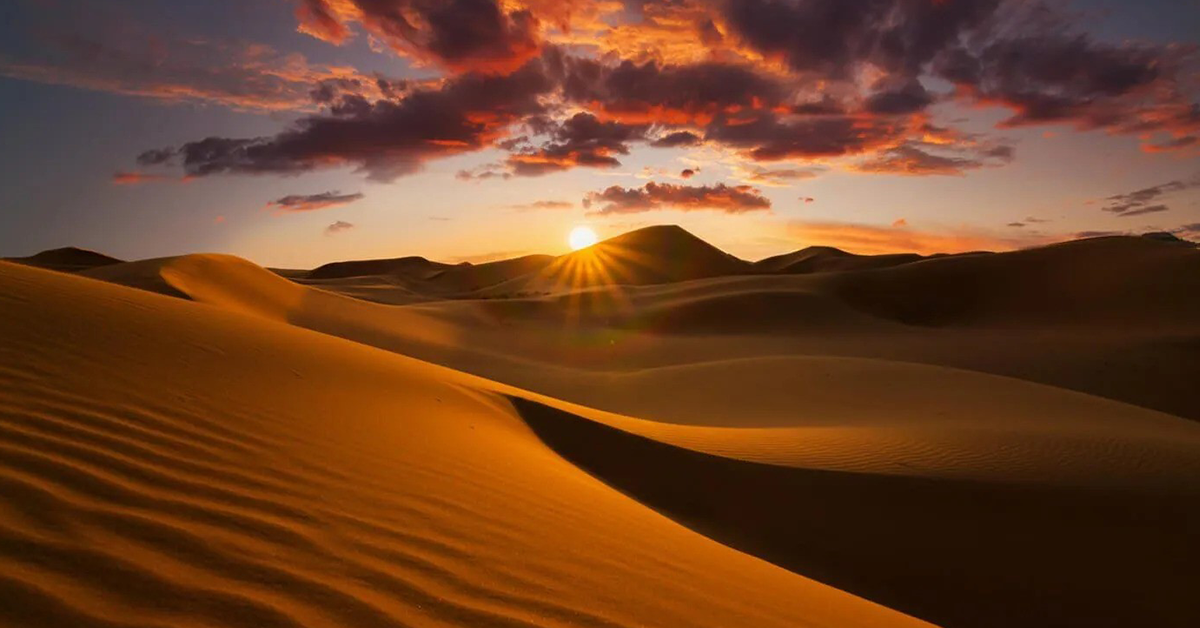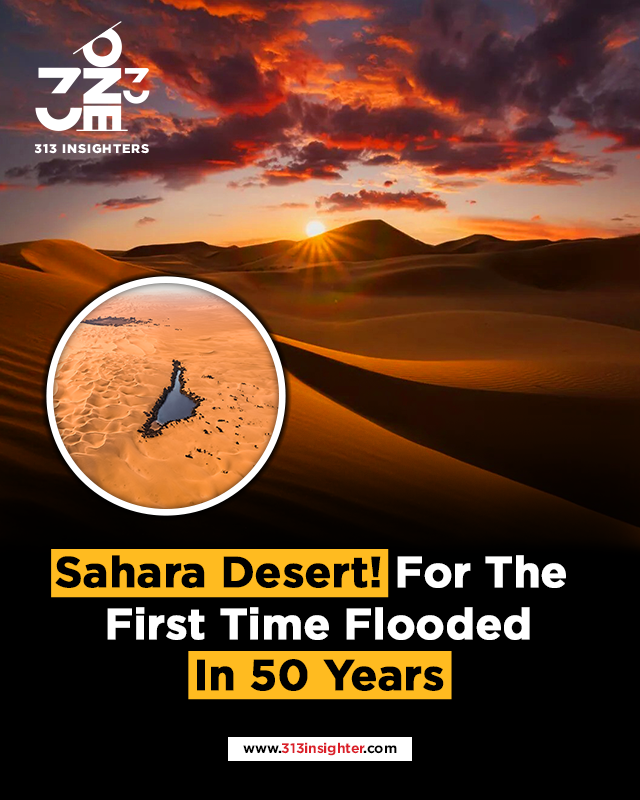Sahara Desert Flooded For The First Time In 50 Years

In a rare weather event, parts of the Sahara Desert in south eastern Morocco were hit by severe flooding after two days of heavy rain. The storm brought more rain than the area usually gets in a whole year, causing an unusual and intense situation in the normally dry desert.
Sahara Desert Rainfall Breaks Records in Morocco
The village of Tagounite, located 450 kilometers south of Morocco capital Rabat, saw an incredible 100mm of rain in just 24 hours in September. This was much more than the usual rain expected in the area. The heavy rain changed the desert landscape and disrupted local life, leaving communities struggling with the aftermath.
Lake Iriqui Fills for the First Time in 50 Years
One of the most surprising effects of the storm was the sudden filling of Lake Iriqui, a dry lake bed that had been empty for 50 years. NASA satellite images showed that the heavy rain had refilled this ancient lake, causing a big change in the region ecosystem. This rare event amazed both locals and scientists, as the normally dry land was temporarily turned into a lake.
Experts Warn of Climate Shift in the Sahara Desert
Meteorologists says that this extreme weather event is an extratropical storm, which is rare in the Sahara Desert. Experts have warned that it could be a sign of climate change affecting the region. As global temperatures keep rising, the desert weather patterns may shift, with more storms and evaporation cycles possibly becoming normal in the future.
Floods Cause Loss of Lives and Infrastructure Damage
Tragically, the floods in southeastern Morocco led to the loss of 18 lives. The region was still recovering from an earthquake the year before, making the response to the flooding even harder. Besides the human losses, infrastructure like roads and reservoirs was heavily affected, with reservoirs filling up at rates never seen before.
Global Warming Brings New Threats to the Sahara Desert
Scientists are increasingly concerned that extreme weather events like these could become more frequent in the Sahara Desert due to the effects of global warming. As the world continues to warm, the Sahara may face a future of unpredictable and dangerous weather, putting local populations and ecosystems at risk.



